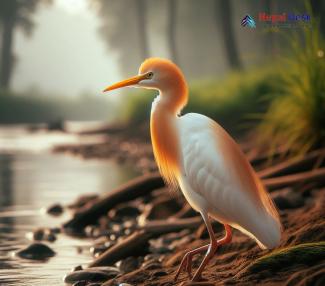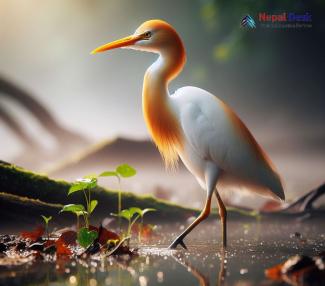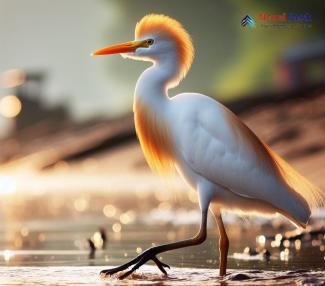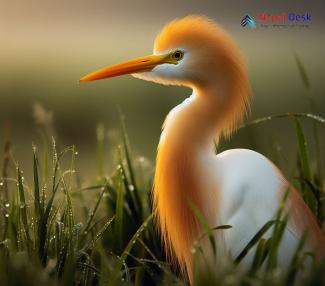Among the various fascinating birds found in Nepal, the Eastern Cattle Egret (Bubulcus coromandus) is one of them. It is a small but captivating bird that can be found in various wetlands, grasslands, and agricultural areas throughout Nepal. It is a species of heron. Many authorities take this as a subspecies of the cattle egret, but some (including the International Ornithologists' Union) separate them. Despite the similarities in plumage to the egrets of the genus Egretta, it is more closely related to the herons of Ardea.
In thisarticle, we will delve into the world of the Eastern Cattle Egret, exploring its habitat, behavior, and importance in the ecosystem of the country.
A Widespread Resident of Wetlands and Agricultural Areas
The Eastern Cattle Egret is a widespread resident in Nepal, often found in marshes, swamps, rice paddies, and other agricultural lands. This adaptable bird thrives in such environments due to their rich food sources and tall grasses that provide perfect cover for nesting. The egret can also be spotted along rivers and lakeshores, making it a prevalent sight throughout much of the Nepalese countryside.
Feathered Friends with Distinctive Features
At first glance, Eastern Cattle Egrets might resemble other wading bird species with their white plumage. However, during their breeding season (which usually occurs between April and September), the stunning golden-orange plumes on their crown, neck, and back set them apart. This eye-catching coloration is designed to attract potential mates during courting rituals. Cattle egrets also have yellow bills and legs that change to a reddish hue during their breeding season.
Adaptive Foragers with Unique Feeding Behaviors
One of the most fascinating aspects of the Eastern Cattle Egret is its feeding behavior. Unlike other wading birds that hunt for prey while standing still in the water, cattle egrets actively follow large herbivores such as buffalo or cattle as they graze through grasslands. The egret cleverly capitalizes on these foraging animals by feeding on insects, like grasshoppers and crickets, that are flushed out from the grass by the movement of their grazing partners. This mutually beneficial relationship provides the egret with an almost constant food supply, while herbivores benefit from having insects removed from their vicinity.
Ecological Importance and Conservation Status
Eastern Cattle Egrets play a critical role in maintaining balance within their ecosystem as they help control insect populations, keeping these pests in check. Additionally, the egret's guano (excrement) is an excellent natural fertilizer that helps enrich the soil, benefiting local agriculture.
Although Eastern Cattle Egrets are currently classified as a species of "Least Concern" on the IUCN Red List, it is crucial to preserve their habitats through sustainable farming practices and conservation measures. By doing so, we can ensure that future generations can continue to marvel at these captivating birds in the beautiful landscapes of Nepal.
In conclusion, the Eastern Cattle Egret is a remarkable bird species that has adapted perfectly to its environment in Nepal. Its unique feeding behavior and importance to the ecosystem make it a fascinating subject for bird enthusiasts and environmentalists alike. As a country rich in biodiversity, Nepal remains proud to be home to these enchanting avian wonders.




